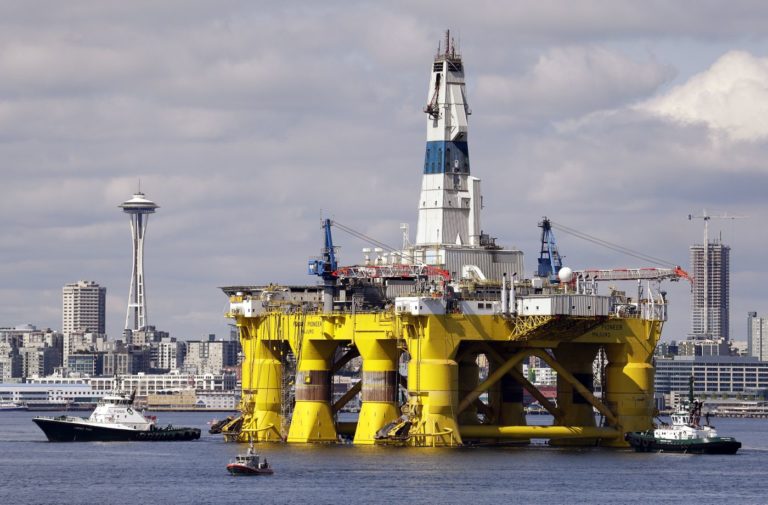Holiday shoppers should enjoy more spending power thanks to the recent sharp drop in oil prices, though cheaper energy could also weigh on the U.S. economy by dampening investment in shale oil production.
While the fall in oil prices doesn’t yet match the 2014-2016 slump to $26 per barrel, the current decline should soon make itself felt through the global economy.
The international crude benchmark, Brent, has fallen under $65 per barrel from a four-year high in early October over $86, and U.S. crude has dropped below $55 a barrel.
Retailers in the U.S., who depend on heavy Christmas spending, should see a boost as lower gasoline prices give consumers more spare cash to spend on gifts.
The average price of a gallon of regular gasoline in the U.S. has fallen to $2.60 from $2.85 a month ago. So the driver of a midsize car or crossover is saving about $4 on a fill-up while drivers of bigger SUVs could save $7 to $8.
U.S. President Donald Trump tweeted Wednesday that the price drop was “Like a big Tax Cut for America and the World.”
The president, who had criticized OPEC during the run-up in oil to above $80, also thanked Saudi Arabia for the recent drop in the price. How much credit OPEC and Saudi Arabia deserve is questionable, however. Along with the U.S. and Russia, the Saudis had boosted oil production in anticipation of sharply lower exports from Iran, due to pending U.S. sanctions. But Trump added a six-month waiver for several countries that are major consumers of Iranian oil when he imposed the sanctions on Nov. 5.
Instead of spiking, oil prices have slumped. Concerns about slowing global growth and weaker demand have also weighed on prices.
It’s likely Saudi Arabia and OPEC will take actions to raise prices. Analysts at Commerzbank expect OPEC and some non-OPEC countries to agree to a production cut of at least 1 million barrels per day at the cartel’s next meeting on Dec. 6 in Vienna.
“We see the oil market as being in a phase of exaggeration and expect a noticeable price recovery after the OPEC meeting at the latest,” the analysts wrote.
The drop in oil prices isn’t all good news for the U.S. economy, now that the nation has more than doubled its production of oil over the last decade. The price decline could lead to less investment in new rigs in oil-producing U.S. states, offsetting the overall impact on economic growth.
“Lower oil prices are now a net drag on the U.S. economy. This is a huge break from the past,” said Ian Shepherdson, chief economist at Pantheon Macroeconomics.
Shepherdson said the oil price drop would soften growth “at the margins” as the U.S. slows once the boost from recent tax cuts fades.
The economic impact is also different this time for Russia, which fell into recession after the last oil slump. Analysts say the country, a major oil and gas producer, is more insulated from a market drop because it has found ways to balance the state budget at lower oil prices. That’s one reason Russia has been pumping oil at top speed recently.
The IEA says abundant global oil supplies should be welcomed as insurance against market volatility. It says lower prices are also a big break for people in developing countries who have seen fuel prices rise due to a stronger U.S. dollar, the currency oil is denominated in.
The U.S. oil contract traded at $55.55 a barrel in midday trading in the U.S. on Wednesday, up $2.12, or 4 percent. Brent crude was at $64.22 in London, an increase of $1.69.
(AP)










